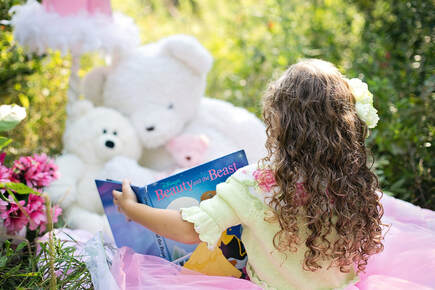|
As a children's book editor, I've worked with many really talented writers who have great stories to tell--imaginative, fun, educational. But, I've also read many manuscripts that for one reason or another miss the mark. One thing I find in common, whether a story is great or not so great, is that authors often struggle to understand and write for their target audience.
One of the tricky things about writing for children is that there is a wide range of ages, stages of development, reading abilities, and interest levels. And you need to determine and understand who you're writing for in order for your book to be successful. Below are a few tips: 1. To determine the age of your audience, first consider your subject matter. The more complex, the older the age should be. But, you also need to think about kids' interests at various levels. Most 5th graders are not going to be interested in subjects that seem too juvenile. And, books with a lot of puns or situational humor are going to be confusing to young kids. If your story has children as characters, the characters' ages should roughly match your audience's age. 2. Choose the right format. There are lots of different types of children's books: board books, picture books, early chapter books, chapter books, graphic novels, etc. Sometimes an author starts writing what they think will be a picture book only to discover it would be better as an early chapter book. 3. Don't write too much! Word and page count are critical and one of the biggest challenges authors face. This especially pertains to picture books and early chapter books. Go to a bookstore and scan through books for your target audience age to get a sense of how long your book should be. Most people write too much. 4. Check the readability. If your book is targeted to 8-9 year olds, take some time to figure out the average reading level for third or fourth grade. Most kids at that age are reading independently, but if your book is too challenging, they won't read it. You can determine your writing's reading level through online Lexile readers that will scan a portion of your book. If it doesn't match, you need to edit. 5. Check the readability. Yep, I said it again. I have read many manuscripts where the story and the reading level simply don't match. When you're writing, think about the end experience. Who will be reading it? An adult reading to a child? Or is the child reading it on their own? Is this intended to help kids learn how to read? Lots of picture books are read to children. So, many people think they don't need to consider their book's reading level. But, 1st through 3rd graders, kids who are transitioning to early chapter books, will read picture books independently. Regardless, if you've included vocabulary or concepts that are too advanced, parents will be spending too much time explaining, and that's when kids become disinterested. 6. Choose an illustrator carefully. There are so many talented illustrators out there, each with their own style. You can see illustrators' portfolios on the Society of Children's Book Writers and Illustrators (SCBWI) website. Make sure the illustrator's style matches not only your vision for the story but also the target age. 7. Get help and feedback! Have your story read by parents and teachers of your intended target audience. Or contact a children's book editor (like myself--shameless plug) to help you. I love helping people with their stories, whether it's at the beginning or it's ready to publish. But, regardless, make sure to get feedback. It can seem intimidating, but it's worthwhile!
0 Comments
Leave a Reply. |
CARRIE HaslerGet the buzz on what's happening in my world of children's books and education! Archives
October 2022
Categories |
|
Site powered by Good Ink



 RSS Feed
RSS Feed
